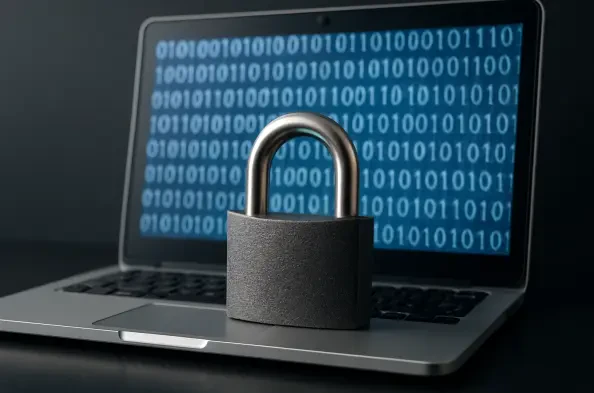Imagine a world where the digital locks safeguarding sensitive business data, personal information, and national security secrets are suddenly rendered obsolete by a technological leap so profound that no current defense can withstand it, and this isn’t science fiction but a looming reality. Quantum computers are projected to break today’s encryption standards by the 2030s, according to research from RAND. While this breakthrough remains on the horizon, the implications are already sending ripples through industries and governments alike. The risk extends beyond mere data breaches to encompass everything from customer records and VPN traffic to encrypted backups meant for disaster recovery. Adversaries are not waiting for this technology to mature—they’re collecting encrypted data now, betting on future quantum advancements to unlock it. This pressing challenge demands attention and action from every organization reliant on digital security, setting the stage for a critical shift in how data protection is approached.
1. Understanding the Quantum Challenge
The foundation of modern encryption, such as RSA, rests on mathematical problems so complex that classical computers would take centuries to solve them. These methods secure everything from online transactions to confidential communications across the globe. However, quantum computers operate on fundamentally different principles, leveraging quantum mechanics to perform calculations at unprecedented speeds. Research from the MIT Technology Review indicates that a sufficiently powerful quantum computer could crack RSA-2048 encryption in just 8 hours. This dramatic reduction in time transforms what was once an impenetrable barrier into a fleeting obstacle. Major tech giants like IBM and Google are already pushing the boundaries of quantum computing, with functional prototypes in their labs. Although these machines aren’t yet capable of breaking encryption, their rapid development signals an urgent need for preparedness across all sectors that depend on secure data transmission.
Beyond the technical marvel of quantum computing lies a stark reality for data security. Sensitive information with long-term relevance, such as patient health records or financial archives, faces heightened vulnerability under current encryption standards. If these datasets are protected by algorithms that quantum systems can dismantle, they become prime targets for exploitation once the technology matures. The Global Risk Institute warns that adversaries are actively harvesting encrypted data today, storing it for future decryption when cryptographically relevant quantum computers (CRQCs) become available. This strategy of “harvest now, decrypt later” underscores the immediacy of the threat, even if the full capability of quantum systems is still years away. Organizations must recognize that data encrypted today could be at risk tomorrow, necessitating a proactive approach to safeguard information with extended retention periods.
2. Exploring Post-Quantum Cryptography as a Solution
Amid the looming threat of quantum computing, a promising defense has emerged in the form of post-quantum cryptography (PQC). Unlike traditional methods, PQC is built on mathematical problems that even quantum computers struggle to solve, and crucially, it can be implemented on existing hardware without requiring quantum systems. In August 2024, the National Institute of Standards and Technology (NIST) finalized three PQC standards: FIPS 203 (ML-KEM) for general encryption like securing web traffic, FIPS 204 (ML-DSA) for digital signatures, and FIPS 205 (SLH-DSA) for hash-based signatures. These standards serve as direct replacements for vulnerable algorithms like RSA and ECC, offering a robust shield against quantum threats. Major vendors, including Microsoft, are already integrating PQC support into their products, while cloud providers are updating services to facilitate early adoption, signaling a growing infrastructure readiness for this transition.
While PQC introduces a viable path forward, it does come with certain trade-offs that organizations must navigate. The algorithms often require larger key sizes and more processing power compared to current methods, though the performance impact is minimal—measured in milliseconds rather than minutes—on modern hardware. Additionally, NIST has introduced a backup algorithm, HQC, which relies on different mathematical foundations to diversify cryptographic approaches. This redundancy is critical, as it mitigates the risk of a single point of failure should vulnerabilities be discovered in the primary algorithms. The strategic inclusion of alternatives reflects lessons learned from past cryptographic challenges, ensuring that there are fallback options if needed. As the technological landscape adapts, businesses have an opportunity to align with these advancements, integrating PQC into their systems to stay ahead of potential quantum disruptions.
3. Building a Quantum Readiness Assessment
Preparing for the quantum era begins with a comprehensive understanding of an organization’s cryptographic landscape. Start by cataloging where encryption is used across the infrastructure, from VPN concentrators and web servers to databases, certificates, SSH keys, and application connections. This inventory process is foundational, as it reveals the scope of systems that will need protection against future threats. Prioritizing systems that handle long-term sensitive data, such as health records or financial information, ensures that the most critical assets are addressed first. Less urgent systems, like outdated test servers, can be scheduled for later attention. This step-by-step approach helps manage the complexity of identifying encryption usage, especially in sprawling or legacy environments where documentation may be incomplete or systems are interconnected in unexpected ways.
To support this assessment, leveraging specialized tools can streamline the discovery process significantly. Network scanners and certificate management platforms can uncover encryption usage across an organization’s digital footprint, though manual efforts are often necessary to fill in the gaps. Reviewing old documentation, consulting with vendors, and tracing network traffic may be required to identify cryptography embedded in legacy applications or hardware appliances. Thorough documentation of findings, even if initially recorded in a simple spreadsheet, establishes a baseline for planning. Acknowledging that perfection isn’t the immediate goal allows for incremental progress, which is far more effective than delaying action due to the daunting scope of the task. This pragmatic mindset ensures that organizations begin fortifying their defenses against quantum risks without being paralyzed by the scale of the challenge ahead.
4. Developing a Strategic Migration Roadmap to PQC
Transitioning to post-quantum cryptography requires a structured plan that balances risk and feasibility over time. Appointing a dedicated project leader to oversee the migration is a critical first step, ensuring accountability and focus. Simultaneously, initiating an inventory of cryptographic assets, even if partial, provides a starting point for understanding the scope of the transition. Engaging with vendors to clarify their PQC roadmaps is equally important; vague or delayed responses may indicate potential bottlenecks that need to be addressed early. The UK’s National Cyber Security Centre offers a useful timeline for planning: complete discovery by 2028, finish high-priority migrations by 2031, and achieve full transition by 2035. These milestones highlight the extended duration of cryptographic shifts, emphasizing that starting now is essential to avoid last-minute scrambles when quantum capabilities become mainstream.
Phasing the implementation of PQC based on risk levels helps manage the transition effectively. Begin with pilot projects on non-critical systems to test integration without jeopardizing production environments. Internal tools should be updated before customer-facing applications to minimize exposure during the learning curve. Maintaining hybrid setups, combining classical and quantum-resistant algorithms, ensures backward compatibility during the shift, as full adoption will take years. Budgeting for this migration is another key consideration, as it involves costs for new certificates, updated hardware, and possibly consulting expertise. Delaying financial planning could lead to higher expenses later due to rushed implementations. By addressing these elements systematically, organizations can navigate the complexities of adopting PQC while minimizing disruptions to operations and securing data against future threats.
5. Facing the Timeline and Urgency of Action
The timeline for quantum readiness is not as distant as it might seem, given the pace of technological advancement. Past cryptographic transitions have spanned over a decade, illustrating the extensive effort required to overhaul systems on a global scale. This shift to post-quantum standards will touch every digital interaction, from secure communications to data storage, making early action imperative. The concept of “Q-Day”—the moment when quantum computers can break standard encryption—looms as a critical deadline. While the exact date remains uncertain, projections suggest significant risks by the 2030s, reinforcing the need to adhere to structured timelines like those proposed by cybersecurity authorities. Organizations that delay risk being caught unprepared when quantum breakthroughs accelerate, potentially exposing sensitive data to exploitation by adversaries who have long anticipated this turning point.
The urgency extends beyond technical preparation to strategic foresight in protecting digital assets. Proactive measures taken today can mitigate the impact of quantum advancements, ensuring that sensitive information remains secure even as computational power evolves. This involves not only adopting new cryptographic standards but also fostering a culture of vigilance and adaptability within organizations. By aligning with recommended milestones and investing in readiness, businesses can position themselves to withstand the inevitable challenges posed by quantum technology. The focus must be on incremental progress, recognizing that each step forward builds resilience against a future where current encryption methods are no longer sufficient. Addressing this issue now, rather than later, transforms a potential crisis into a manageable transition for data security frameworks.
6. Reflecting on Proactive Measures Taken
Looking back, the steps initiated to counter the quantum threat demonstrated a forward-thinking approach to data protection. Organizations that began cataloging their cryptographic assets and prioritizing critical systems took decisive action to shield long-term sensitive information from future vulnerabilities. The adoption of post-quantum cryptography standards, guided by frameworks like those from NIST, provided a robust foundation for security in an evolving technological landscape. Collaborations with vendors and the allocation of budgets for necessary upgrades reflected a commitment to staying ahead of potential risks. These efforts, grounded in strategic planning and phased implementation, ensured that digital infrastructures were not left exposed when quantum capabilities emerged as a tangible challenge.
Moreover, the emphasis on timelines and urgency in past actions proved instrumental in navigating the complexities of cryptographic migration. By adhering to structured milestones and fostering adaptability, many entities successfully mitigated the panic that could have accompanied “Q-Day.” The integration of hybrid systems during transitions showcased practical solutions that balanced innovation with compatibility. Moving forward, the lessons from these endeavors highlight the importance of continuous monitoring and investment in emerging security technologies. Staying proactive, exploring alternative algorithms, and maintaining a detailed inventory of encryption practices will be crucial next steps to ensure sustained protection against quantum advancements and beyond.






